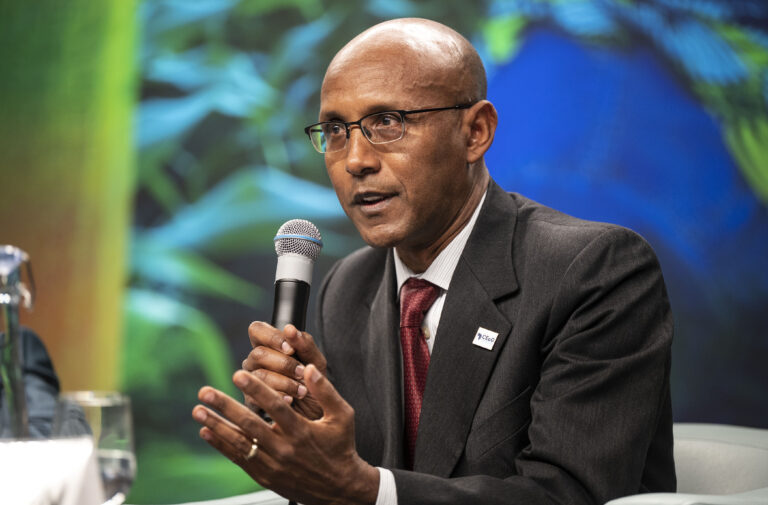
Forensic officers and police load a body bag into a vehicle after recovering human remains from a forested area in rural Kenya. The scene is part of ongoing investigations into suspected serial killings that have rocked local communities. (Photo/Nairobi Leo).
By Daisy Okiring
“He was just a sweet boy with a shy smile. We never thought he would vanish without a trace.” These are the haunting words of Millicent Wanjiku, whose 17-year-old son disappeared in 2022 on his way home from school in Nairobi’s Kayole estate. Months later, his mutilated body was discovered in a forested area—part of a growing pattern of killings with chilling similarities and no arrests.
Kenya is quietly grappling with a horrifying reality: a rise in serial killings, where repeat murderers operate undetected, exploiting cracks in the justice system. These killers often strike the vulnerable—children, women, street workers—and vanish into the same shadows they came from. For the families left behind, closure is rare, justice even rarer.
A Silent Epidemic
Serial killing is not officially tracked in Kenya. The country lacks a central database or task force dedicated to investigating serial crimes. But according to a 2024 report by the Centre for Human Rights and Policy Studies (CHRIPS), violent crimes involving multiple victims have surged by 70% since 2015. While not all are classified as serial killings, analysts believe many share disturbing patterns: similar victim profiles, repeated locations, and specific methods of murder.
What makes this surge particularly alarming is how many perpetrators evade justice. Most operate in informal settlements and rural areas, where policing is weak and victims are often overlooked. Bodies are discovered days or weeks later—in latrines, forests, or shallow graves—and vital forensic evidence is lost.

Police and residents comb through a forested area outside Nairobi where multiple body parts have been found in shallow graves since 2020. (Photo/Reuters).
The Killers Among Us
One of the most notorious cases in recent memory is that of Masten Wanjala, a self-confessed child killer who admitted to murdering at least 12 children over five years. Wanjala preyed on poor families, luring boys with promises of football training or money, then drugging and strangling them. He kept some victims alive for days, tortured them, and even drank their blood in what he described as “ritual practice.” He later escaped police custody and was lynched by a mob in Bungoma.
Also Read: Gachagua: Koimburi was injected with chemical, tortured
Another chilling case involved Philip Onyancha, who in 2010 claimed to have killed 17 women in a so-called satanic mission. He targeted sex workers, strangled them, and drained their blood, believing it gave him supernatural powers. Onyancha later retracted his confession, and his case has been mired in legal delays ever since.
These are only the headline-grabbing cases. Many more slip through the cracks, undocumented and unresolved.

A candlelight vigil in following a series of brutal murders. Youth have begun organizing night prayers for protection (Photo/Truthdig).
Methods of Murder
What unites many of Kenya’s suspected serial killers is the calculated, chilling precision with which they operate.
Killers often use manipulation and trust to lure their victims. Wanjala posed as a sports coach. Others impersonate boda boda riders, pastors, or even police officers. Once trust is gained, victims are led to isolated areas—abandoned homes, forest edges, or poorly lit backstreets.
Strangulation is a common method. It is quiet, efficient, and leaves fewer forensic clues than a firearm. Others use blunt force—rocks, clubs, or metal pipes. In some cases, investigators find signs of ritualistic behavior: mutilated bodies with missing tongues, genitals, or eyes. These details point to possible links with underground cults or illegal organ trafficking, though no formal evidence has proven this connection.
Most of the victims are easy targets—children, sex workers, domestic workers, and those walking home late at night. Their disappearances aren’t always reported quickly, and even when they are, police response is often delayed or insufficient.
Why They Aren’t Caught
Kenya’s justice system is not built to catch serial killers. There are no certified criminal profilers, and forensic departments lack basic tools. Police in rural areas have little to no access to fingerprint kits, luminol (used to detect blood), or DNA technology.
Investigations rely heavily on eyewitness accounts, which are often unreliable. According to a 2023 Transparency International Kenya report, 62% of citizens say they would not report a crime due to mistrust in the police or fear of retaliation.
Also Read: Obstetric Fistula: A tragedy haunting Kenyan maternity wards
The court system is equally troubled. Convictions take years. Files go missing. Witnesses disappear. Confessions, like Onyancha’s, are sometimes coerced or improperly recorded.
The Kenya National Commission on Human Rights (KNCHR) warned in a 2022 report that the lack of a centralized registry for missing persons and unidentified bodies makes it easy for serial offenders to go unnoticed—especially if they operate across county lines.

Abandoned shoes near a crime scene in Kayole estate, one of several low-income areas plagued by disappearances (Photo/CNN).
Broken Families, Haunted Communities
For the victims’ families, the trauma never ends. Mothers like Millicent live in a state of suspended grief, haunted by what-ifs. Communities are consumed by fear. In Kisii County, where five women were killed in similar circumstances between 2020 and 2023, residents imposed their own curfews. Local churches began organizing night vigils and prayer sessions.
Mental health workers report spikes in anxiety, PTSD, and depression among affected families. “These are not just murders—they are emotional catastrophes,” says Mary Atieno, a trauma counselor with Usikimye, an NGO that supports survivors of violence.
The fear affects everyone. Children skip school. Marketplaces empty early. Nightfall feels like a threat.

A grieving mother in Bungoma County. Her son was one of several believed to be victims of a suspected serial killer. (Photo/SafeWorld).
Who Is Fighting Back?
In the absence of strong state systems, NGOs and activists are stepping in. Missing Child Kenya operates a 24/7 hotline for parents of missing children. Usikimye offers counseling and shelter for women and families affected by gender-based violence. The Wangu Kanja Foundation pushes for victim-centered justice and legal reforms.
Globally, organizations like Interpol and Human Rights Watch have called for better investment in forensic labs and criminal investigation units. Interpol has assisted Kenyan police on specific murder cases, but much of the country remains untouched by such cooperation.
The Directorate of Criminal Investigations (DCI) launched a specialized homicide unit in 2022, but it remains under-resourced and lacks the manpower to address the breadth of the crisis.
Also Read: How Uganda is reshaping the HIV response without U.S. aid
A Nation at a Crossroads
Kenya cannot afford to ignore the rise of serial killing. The nation needs a central crime database, trained profilers, real-time alert systems for disappearances, and forensic labs in every major region. More importantly, it needs public trust in law enforcement—without it, even the best systems collapse.
Serial killers thrive in silence. They hide behind broken institutions, community fear, and public apathy. Only by confronting this horror head-on—through reporting, education, and systemic reform—can Kenya hope to stop them.
“He didn’t deserve to die like that,” Millicent says softly, clutching her son’s school photo. “No child does. No mother should live in fear of monsters that the law refuses to see.”



